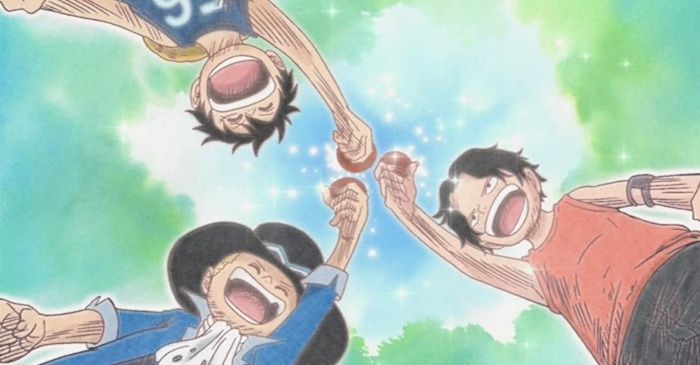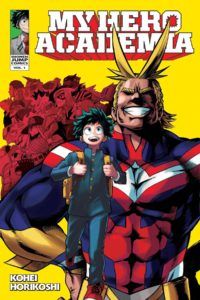Shōnen manga is also known as shonen manga or shounen manga — it’s all the same romanised (or converted) name for this specific category of Japanese manga. And while the target audience is male and generally between 12 and 18 years old, you don’t have to BE a teenage boy to like these comics. It’s all about the action and adventure and crazy-arse attitudes. Of course, these same elements appeal to almost anyone. I still remember sharing Ninku with my classmates back in the mid-1990s. Thirty years later and I wish I had kept more of my comic-books and manga. Though, in all honesty, today’s selection of manga is so much better!
The Long History of Shōnen Manga
Shōnen manga has been around for a very long time. The first Shōnen manga dates back to around 1895, as part of a shift in Japanese culture to broaden the Empire and inspire the youth to achieve great things! Back then it was all about adventure and honour with a touch of self-discipline (just a touch).
It wasn’t until after World War II when Shōnen manga had its First Resurgence, thanks to the growing interest in science, technology, and the need to rebuild the world. It was the perfect environment for kids with a sense of adventure and honour, eager to return to the weekly serialisation so popular in the early 1900s. Simply take a look at the flagship manga, Mighty Atom (also known as Astro Boy). Originally published in Japan in 1952, the series gained international popularity with the 1980s anime (dubbed in English) and the republication in 2002. The stories themselves, while written in the 1950s, have maintained a contemporary relevance due to the core Shōnen concepts. Many Shōnen manga creators attribute Astro Boy as a pivotal influence on their careers.
What Makes It Shōnen Manga
Any setting works so long as you have the young protagonist (often male) facing self-perception with the need for self-discipline/education and honourable service to society/community/family/friends. In recent years, emphasis has turned to “coming-of-age” elements, while reining back the violence and sexual imagery.
Series like Naruto, Dragon Ball, and My Hero Academia have set the benchmark for western expectations of Shōnen manga. Do you need to know any of this to enjoy Shōnen manga? Hell no! But sometimes a little history can help explain the common theme across all of these mangas. Plus, you never know when it will come up on trivia night.
Old School Classic Shōnen Manga
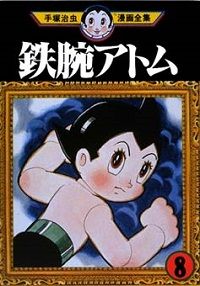
Astro Boy by Osamu Tezuka
April 1952 to March 1968 – 23 Volumes
As mentioned earlier, Astro Boy is considered by many as the first Shōnen manga, or at least the first of the First Resurgence. Either way, this is the title all other Shōnen manga are compared with. Astro Boy is a powerful android created by Dr Tenma to replace his dead son, Tobio. However, the grief is simply too much for Dr Tenma, and he abandons Astro Boy to a circus. Fortunately, Astro is discovered by Professor Ochanomizu and given a fresh new life. From this point, the story focuses on the warm supportive relationship between the Professor and Astro while giving Astro Boy purpose in defending his family, his nation, and other robots. It is futuristic with sci-fi elements and prescribes a need for co-existence to justify the constant battle. If you have just stepped into Shōnen manga, Astro Boy is a great start.

Dragon Ball by Akira Toriyama
December 1984 to June 1995 – 42 Volumes
Dragon Ball entered the field during the second resurgence of Shounen Manga. Originally published in the mid-1980s, its rise in popularity set the benchmark for contemporary manga. Initially based on Journey to the West, the story follows the life of Son Goku and his search for seven magical orbs to summon a dragon. The series is balanced between comic fantasy and adventure with plenty of martial arts action. There is a huge cast of both new friends and enemies to meet along the way. With a whopping 42 volumes to collect for the main series, Goku is credited as one of the most influential manga characters to date. There is even an official Goku Day: 9 May – if you start reading now, you might finish in time to join the celebrations.

Naruto by Masashi Kishimoto
September 1999 to November 2014 – 72 Volumes
Before you start on this series, take note: the story is told in two parts PLUS a follow-up “Next Generation” series. The star is Naruto, a young ninja who dreams of becoming the leader of his village. He also is the body host of a powerful fox known as Nine-Tails, defeated by Naruto’s father and sealed inside his then-newborn son. Way to go, Dad. Part 1 centres on Naruto as a preteen, training to be the best ninja and struggling to control the spirit within. Part 2 continues the story with Naruto as a teen and working towards the honourable role of Hokage (village leader). Primarily this is a fun-filled coming-of-age story, mixing teenage personalities with Japanese mythology.
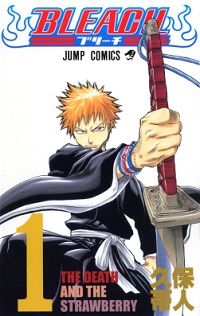
Bleach by Tite Kubo
August 2001 to August 2016 – 74 Volumes
A long-running favourite from the early 2000s, Bleach is a balance of teenage angst and supernatural death themes. Ichigo is a hotheaded teenager who starts off seeing ghosts and kind of accidentally picks up Soul Reaper powers and the responsibility to defend humans from evil spirits. Of course, he still needs to attend high school and balance his friends with this new sense of duty. There is a real dichotomy between old traditions and new interpretations, with the Japanese belief of spirits living together with humans in an acceptable co-existence.

Fullmetal Alchemist by Hiromu Arakawa
July 2001 to June 2010 – 27 Volumes
One of the best steampunk/spirit-world stories I have ever read. In the fictional country of Amestris, alchemy is a widely practised science, and society is a blend of the European Industrial Revolution and an alternate post-WW2. Two brothers, Edward and Alphonso, attempt to use alchemy to bring back their dead mother. The attempt failed, with Edward losing his left leg and Alphonso losing his whole body. To save his brother’s soul, Edward also sacrificed his right arm. Their efforts catch the attention of the government, and the two brothers are offered the opportunity to find a way to restore their bodies while working as State Alchemists. The series is rich in social commentary, sharing insight into Japanese Indigenous people (the Ainu people) as well as discussion on war veterans and political greed. It is also one of few Shōnen manga with positive female representation; in part thanks to its female creator.

Demon Slayer: Kimetsu no Yaiba by Koyoharu Gotouge
February 2016 to May 2020 – 23 Volumes
Demon Slayer has all of the essential elements: a young boy finds his family slaughtered by a demon with one sole survivor, his younger sister. However, she has been turned into a demon, and thus the boy’s need for revenge is slightly tempered by his need to protect his sister from other demon slayers. Although it sounds like your average Shōnen, Demon Slayer stands out with its intriguing collection of demons and amazingly detailed sword fights. The action balances with emotion, giving you a real sense of the cost for each and every fight.

Fairy Tail by Hiro Mashima
August 2006 to July 2017 – 63 Volumes
This is a full-blown fantasy world, with guilds of wizards using magic to earn a coin. Fairy Tail is definitely an easy-read series, with all of the common elements found in Shōnen manga: a good dose of slapstick humour, plenty of action, and enough emotion to keep you invested in the characters’ development. Lucy is a wizard who wants a piece of the action, starting with the Fairy Tail – a club for the most powerful wizards of the land. Instead, she ends up fighting pirates with a strange boy named Natsu and his talking cat. The artwork is the prize feature in this series, with fantastic whimsical detail given to each and every character. It is also one of the few series to push the “low sexual innuendo” rule for Shōnen manga, so read it yourself first before giving it to younger kids.

Food Wars!: Shokugeki no Sōma by Yūto Tsukuda and Shun Saeki, with recipes from Yuki Morisaki
November 2012 to June 2019 – 36 Volumes
One of the best food-related manga ever and a unique take on the standard Shonen manga genre! Food Wars! is set in an exclusive culinary college where students are competing for the prestige of merely graduating, let alone a seat on the Council of Ten Masters. Students regularly battle in “Food Wars” for a range of benefits: cooking utensils, council membership, study resources, and even expulsion from the school. Our main protagonist is Soma Yukihira, a teenager with dreams of becoming a full-time chef like his father. When his father takes up a new job and closes the family restaurant, Soma is sent to the culinary college to learn more about the culinary craft. If Shokugeki no Sōma inspires you to do some manga-inspired cooking, check out Cook Your Comics from fellow Book Rioter S.W. Sondheimer.

Haikyū!! by Haruichi Furudate
February 2012 to July 2020 – 45 Volumes (Volume 44 in English is available to preorder)
This is one of the most recent series to reach completion and hold on to its popularity right to the end. Unlike the other Shōnen manga classics mentioned above, Haikyū!! is based on a sport – volleyball. Shōyō Hinata is a junior high school student obsessed with volleyball. So much, he joins the school volleyball team as its sole player and spends an inordinate amount of time trying to convince other students to practice with him. Then he has to make it to an actual tournament. The story is as much about the dynamics of human relationships off the court as well as the strategy of volleyball on the court.

Blue Flag by Kaito
2017 to 2020 – 8 Volumes
Blue Flag is not your typical Shōnen manga. There is no sweeping adventure and super-physical action, nor vibrant dynamic action across each page. However, it IS a story of self-discovery, finding your tribe, and coming of age. Blue Flag is a quiet love story across four people: Futaba is a shy girl with a crush on Toma, the star athlete. Toma used to be best friends with Taichi and wants to rebuild the friendship again. Futaba asks Taichi to help with her “crush,” but he starts to develop feelings for Futaba himself. Unbeknownst to either of them, Toma has fallen for Taichi and Futaba’s best friend has a crush on her! I love how Blue Flag has found a way to bring a diverse spectrum of feelings to the foreground and make it all seem so normal. There are issues of bullying and homophobia discussed within the story, and they are handled with great sensitivity and sincerity. While it may not seem like your typical Shōnen manga, Blue Flag has been widely popular on “Weekly Shōnen Jump,” especially amongst teenagers who can relate to the complexities of relationships in high school.
And Now for Some Ongoing Shōnen Manga
Most manga originates as serialised issues in anthology magazines. Collected bound volumes are popular with western markets, but ongoing Shōnen manga is best read in their original magazines, with many available online.
Boku no Hero Academia / My Hero Academia by Kōhei Horikoshi
Currently published in “Weekly Shōnen Jump”
This is one of the most popular Shōnen manga amongst the western demographic. In a world almost filled with superheroes, we have Izuku Midoriya, who is essentially “normal.” All he wants is to train at UA High School and become the greatest superhero that ever was. He has the soul of a hero, but he needs a lot of other help to make it. Like most Shōnen manga, it follows the relationships between the characters and the decisions they make while learning about their powers. Be forewarned: this is the series that will have you stalking your computer for updates every week. To start you off, learn more about the characters here.

One Piece by Eiichiro Oda
Currently published in Weekly Shōnen Jump
One Piece is one of the longest running Shōnen manga, with 98 volumes available and more to come. The never-ending adventures follow Monkey D. Luffy, a boy who unintentionally ate Devil Fruit and gave his body the same properties as rubber. Together with his crew named The Straw Hat Pirates, Luffy embarks on a journey to find the One Piece and proclaim himself King of the Pirates. It is filled with fun, from the cartoonish artwork to the comedic highlights in the fight scenes. Nothing is taken seriously in this series, and it works brilliantly.

Spy X Family by Tatsuya Endo
Currently published with Shōnen Jump+
If you think your family is dysfunctional, you are going to love this. A spy needs to create a family to complete a mission. He adopts a daughter and arranges a fake marriage with a suitable “wife,” not realising one is telepathic and the other is a highly-trained assassin. And this is all before he picks up the dog who was originally a test subject and can now see into the future. This mad mix of people creates the perfect comedic environment for action and chaos. Twilight is supposed to be the main character, but trust me when I say the young daughter, Anya, steals every scene she is in.

Hunter x Hunter by Yoshihiro Togashi
Currently published with Weekly Shōnen Jump
Although I am listing this under “ongoing,” Hunter x Hunter is frequently on hiatus, with delays between updates. However, there are currently 36 volumes published in hardcopy, so you have plenty to catch up on while you wait for the next installment. Gon Freecss is a young boy, who suddenly learns the father he had thought dead is actually a world-renowned Hunter. He decides to leave his home and train to be a Hunter like his father, with the ultimate goal of finding his long-lost dad (and hopefully asking him, WTH?!?). Hunters are elite members of society who can track down secret treasures, rare animals, and even humans. Naturally, Hunters also have some of the best stories and adventures – starting with Gon sitting the Hunter Examination and meeting his new friends: Kurapika, Leorio, and Killua. Like many Shōnen manga, Hunter x Hunter brings together a great team of support characters to lift up the protagonist and show a genuine arc of growth and adventure. My favourite is Killua and his self-discovery before joining Gon and the team. It is, however, very graphic in its violence and definitely more suited for the older end of the typical Shōnen age-group.
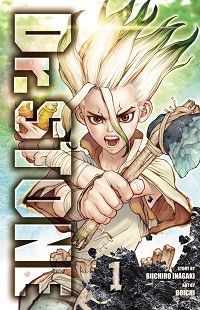
Dr. STONE by Riichiro Inagaki and Boichi
Currently published with Weekly Shōnen Jump
Set in the distant future, Dr. STONE is built on the vision of a new world order based on science. Fifteen-year-old Senku Ishigami wakes up after a mysterious flash petrified nearly all human life 3,700-years earlier. Determined to find a cure, Senku relies on his studies and skills in science to learn how petrification happened. Unfortunately, another revived human does not agree with Senku’s view on science and wants to create a new world order based on power and strength. Rebuilding a civilisation is hard enough without having to deal with the age-old battle of Might v Mind. Dr. STONE appeals to a wide audience because it brings together classic Shōnen manga elements with very real, very contemporary issues like “LISTEN TO SCIENCE” and rebuilding corrupt civilisations.
While much of Shōnen manga will tread the line regarding graphic violence and sexual innuendo, it is easier to remember that most Shōnen manga will strive to maintain a slight innocence to it. They are, after all, aimed at the younger end of the manga audience. If you are looking for more mature content, check out fellow Book Rioter (and manga guru) Vernieda Vergara’s Beginner’s Guide to Seinen Manga. You can also learn more about manga with her General Guide to Manga.
